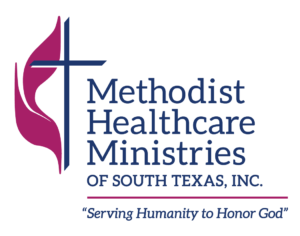As gun violence and mass shootings continue to dominate the American news cycle, other sources of gun violence like suicides are neglected in national conversations. Suicides continue to make up the majority of gun related deaths in the US, yet despite this most of our the national debate on gun violence is centered on mass shootings. As Suicide Prevention Awareness Month is coming to a close, it feels like a particularly apt moment to talk about about suicide and gun violence.
The most recent data from the CDC shows that 48,117 people lost their lives to gun violence in 2022. Of them, 26,993 or about 56% lost their lives to suicide. While the overall rate of gun-related deaths per 100,000 people decreased by 6.8% in 2022, gun death rates have still yet to return to pre-pandemic levels.
Now what does this mean? The numbers show that while gun-related death totals continue to rise, the number of people per capita dying has slightly decreased since 2021. However, gun deaths are still up 25% from 2019. This increase is particularly stark in gun suicides death rates. According to The John Hopkins Bloomberg School of Public Health “[t]he gun suicide rate has steadily increased, nearly uninterrupted, since 2006. In 2021 it reached the highest levels since the CDC began recording such data in 1968; and this past year, in 2022, it surpassed that record.”
The increase is even more visible among teens and kids. In the past ten years the gun death rate for youth has increased by 87% with 2022 having the second highest rate in the past 25 years (2021 still holds the record). 2022 is now the fifth straight year where the leading cause of death among youth is gun violence with a total of 4,590 deaths. Both homicides and suicides contributed to that increase, but suicides remain the majority.
Suicide is a major component of our gun violence problem and is something that we can not ignore when looking towards solutions. Data based research indicates that policy solutions to reduce violence include:
- Implementing permit-to-purchase laws, also known as gun purchaser licensing.
- Using Domestic Violence Protection Orders and Extreme Risk Protection Orders—sometimes called “red flag” laws—to temporarily remove firearms from individuals determined to be at elevated risk for violence.
- Investing in community violence intervention programs.
- Adopting child access prevention laws mandating safe firearm storage in households with children and/or teens.
Texas has not enacted any policies like those mentioned. In the most recent Texas legislative session, one of the few policy angles that has received any traction around gun violence was based on mental health resources. Yet despite that, the legislature failed to provide any additional mental health resources to address our social worker shortage in the state. According to the American School Counselor Association it is recommended to have one school counselor for every 250 students. In Texas, we have one for every 400 kids. Now as of last session the Texas legislature has actually made it easier for schools to avoid hiring school counselors all together by allowing them to hire religious chaplains in their place.
Chaplains do not have the same training as mental health professionals. As detailed by our team member Josh Houston in a previous post, “SB 763 provides very little guidance to school boards. The bill contains no requirements as to qualifications or oversight for chaplains, nor does it set out a clear, authoritative description of chaplain roles and responsibilities.” Bringing chaplains into our schools not only is an infringement on religious freedom, but could potentially reduce our already limited access to mental health resources.
There are ways for the faith community to help address mental health and reduce gun violence, but it is not by replacing mental health professionals. Some of our national partners recently published a guide on suicide prevention for faith leaders titled, “Hope: A Guide for Faith Leaders to Help Prevent Youth Suicide.” The guide offers a variety of tools, language, and resources for faith communities to better equip themselves to be a part of helping youth in crisis. The guide strongly encourages faith communities to connect to mental health professionals and crisis management in their communities in order to direct kids and families to them, not replace them. You can find access to the guide here.
If you are interested in either working to protect our public schools or on addressing gun violence, join a Texas Impact team and become an Issue Champion: Public School Defenders, Ending Gun Violence. Collectively we can make a difference and work towards addressing all aspects of gun violence.
If you or someone you know is struggling please check out these resources:
- National Suicide Lifeline: call or text 988
- National Alliance on Mental Illness
- National Domestic Violence Hotline: 1-800-799-7233
- Trauma Survivors Network
- Survivors Toolkit from Giffords

